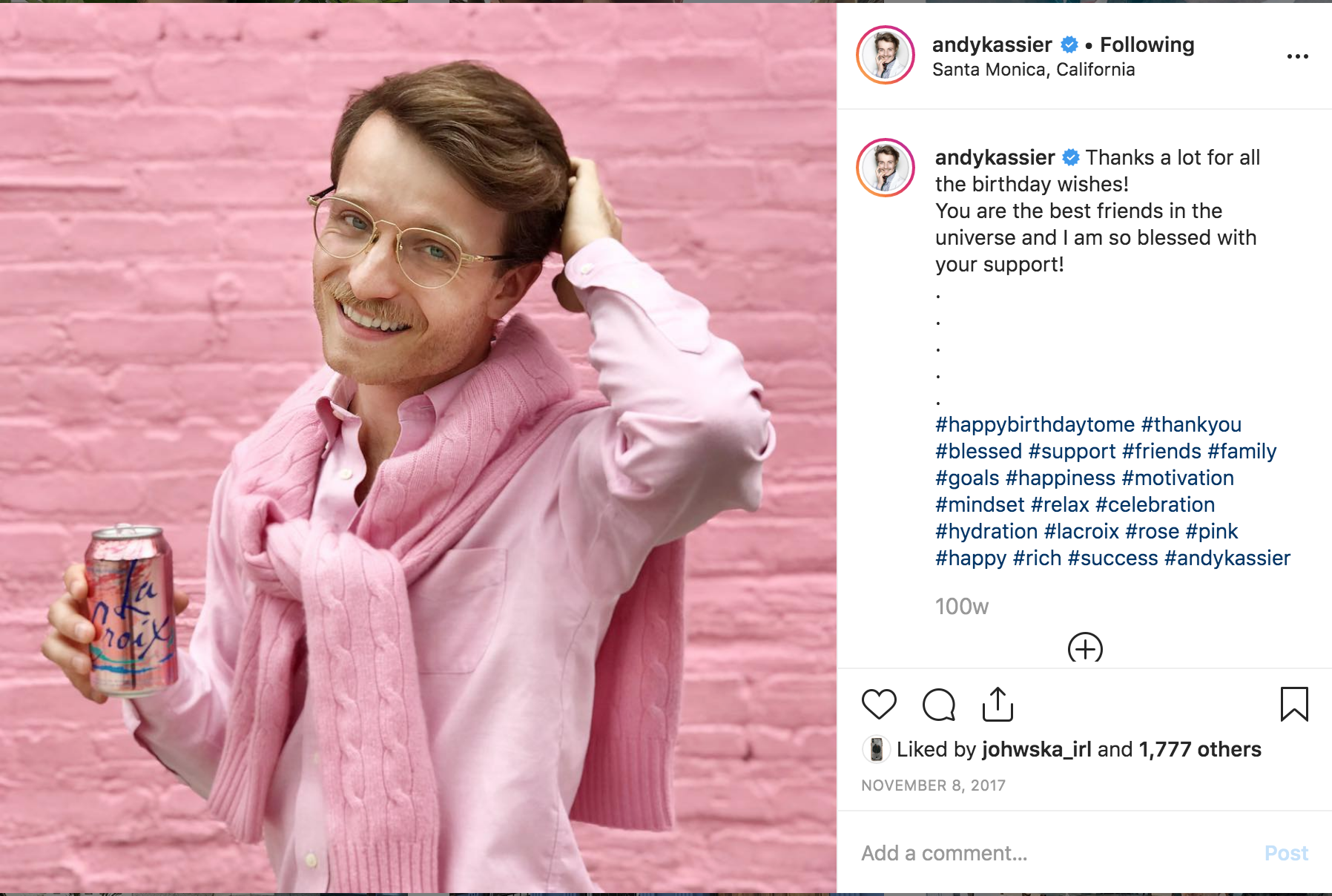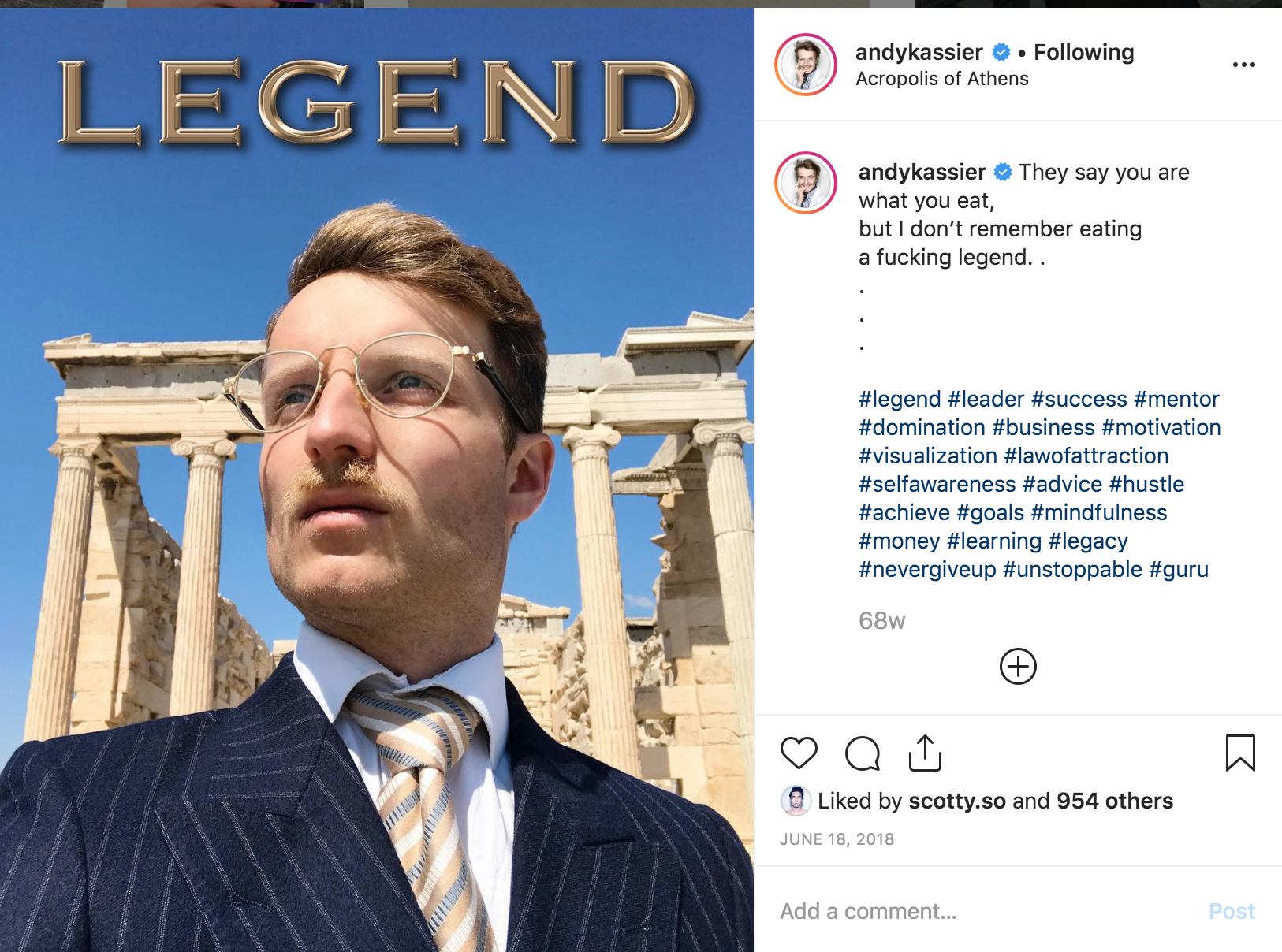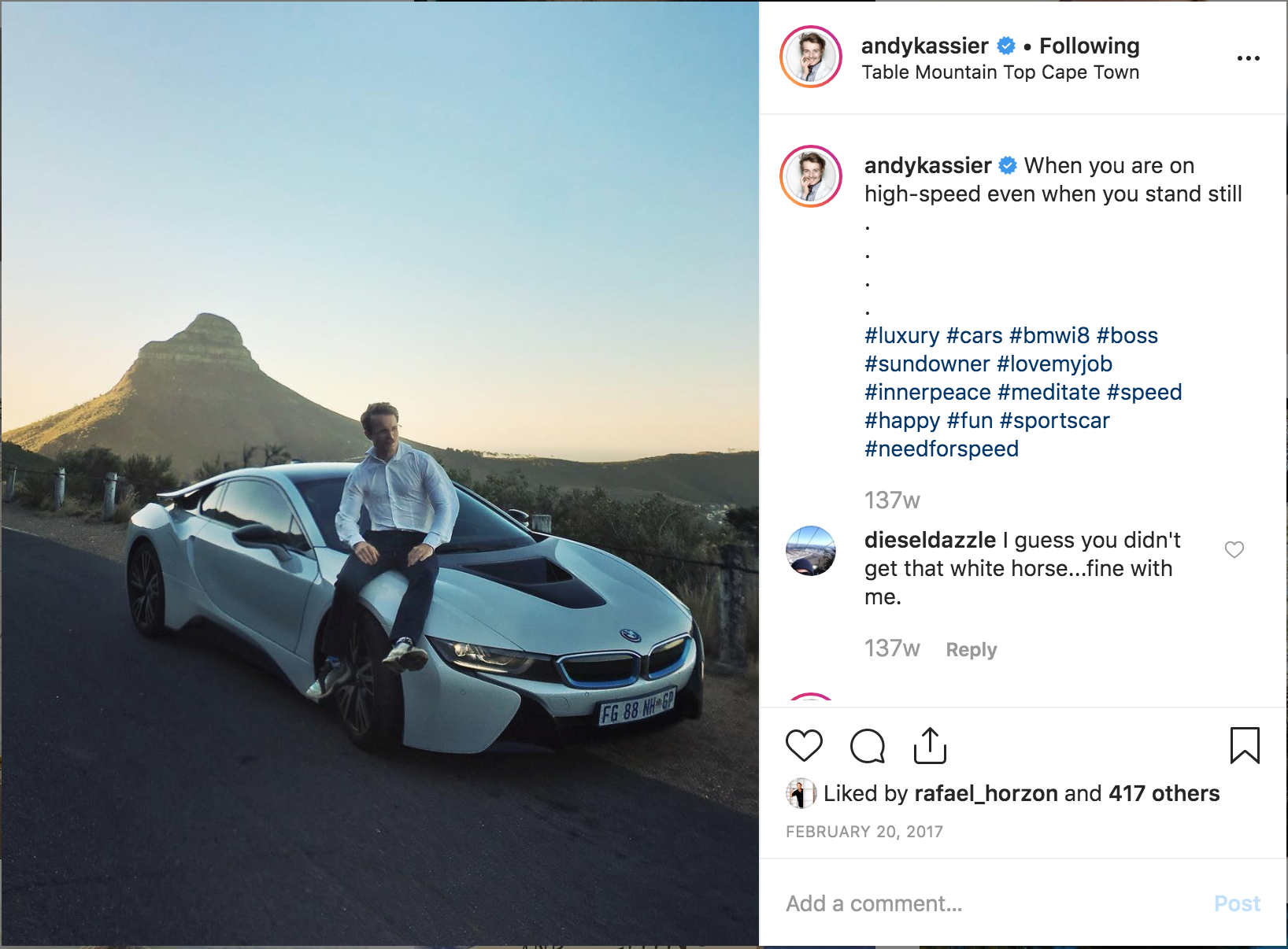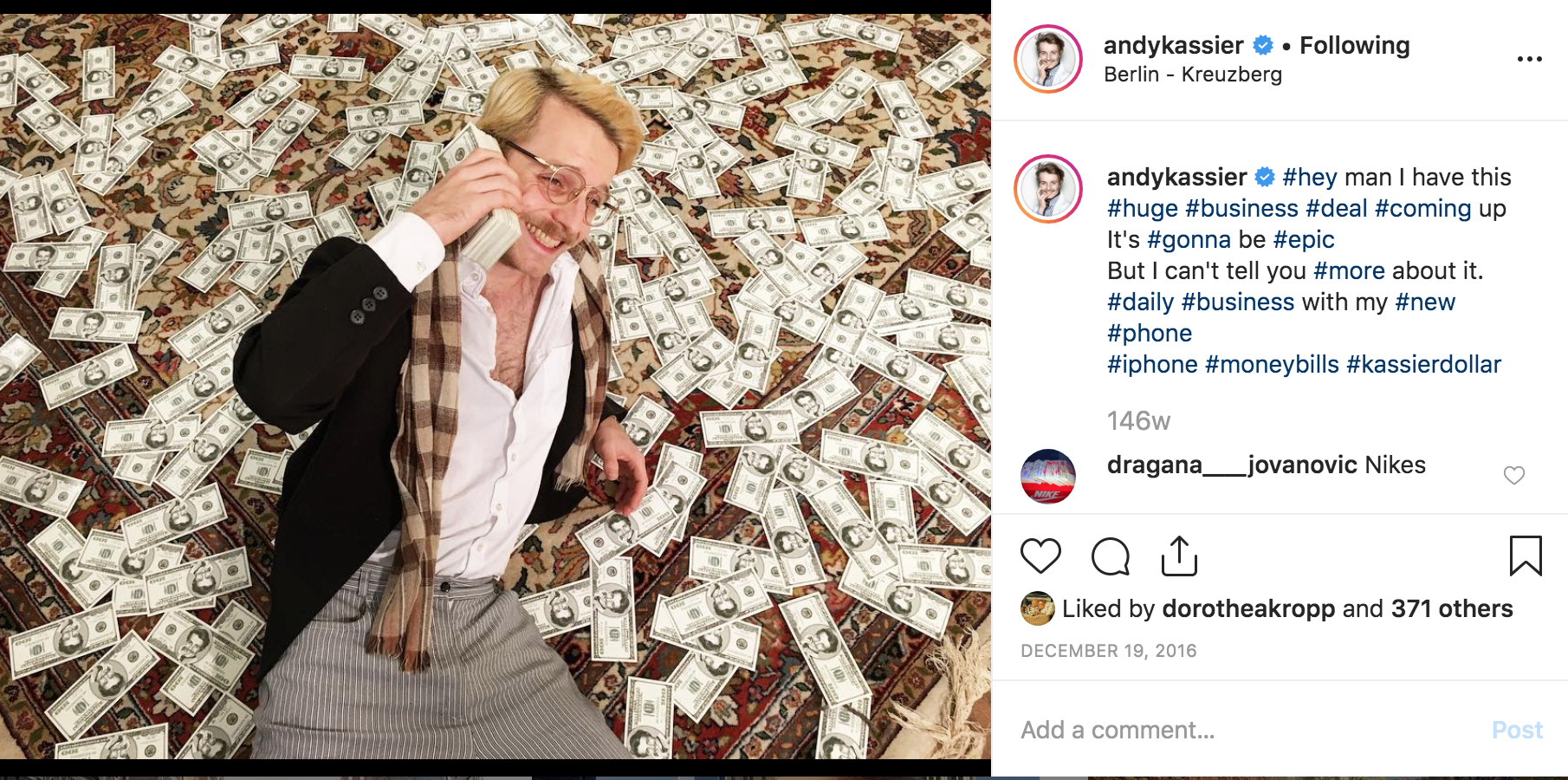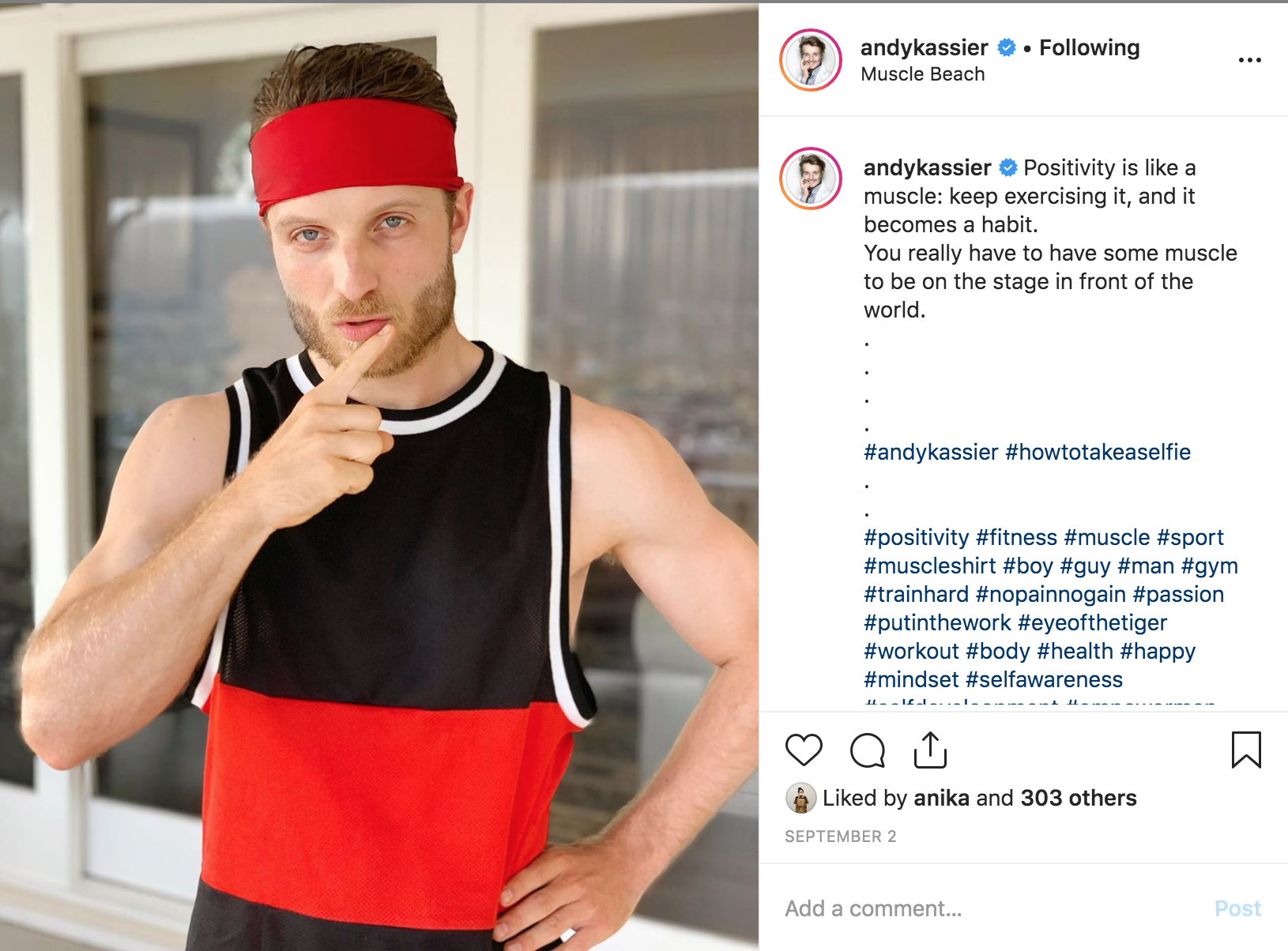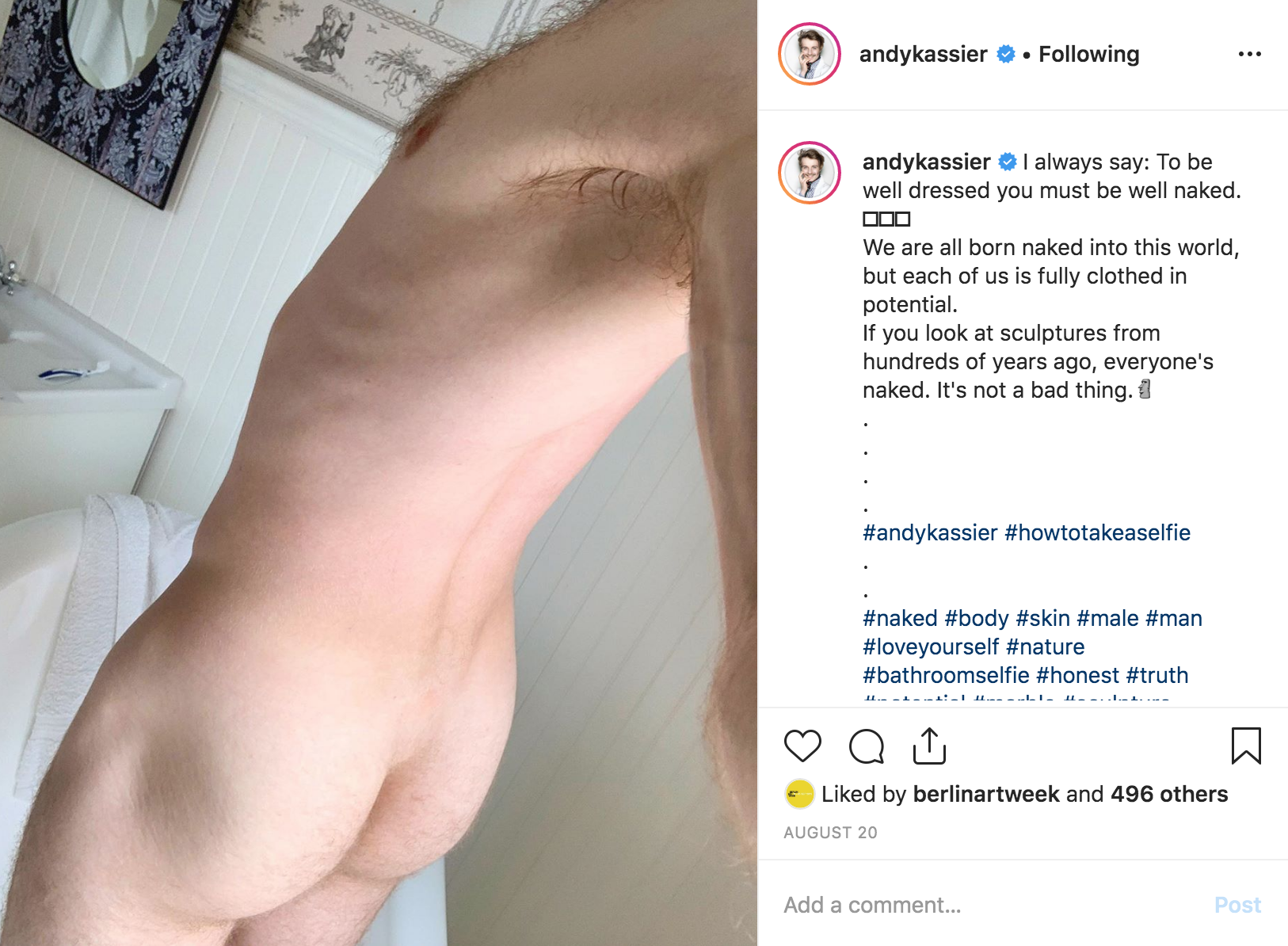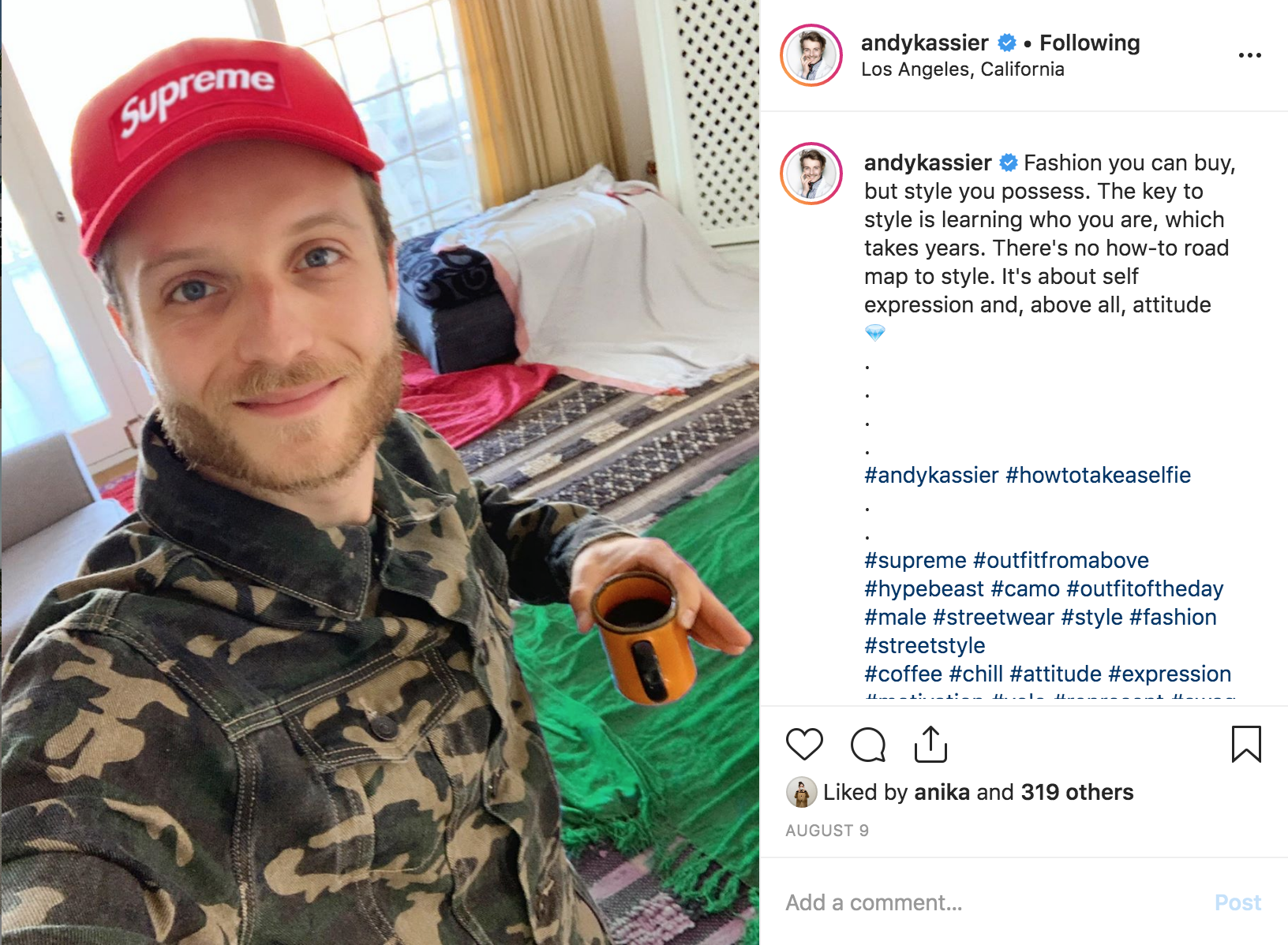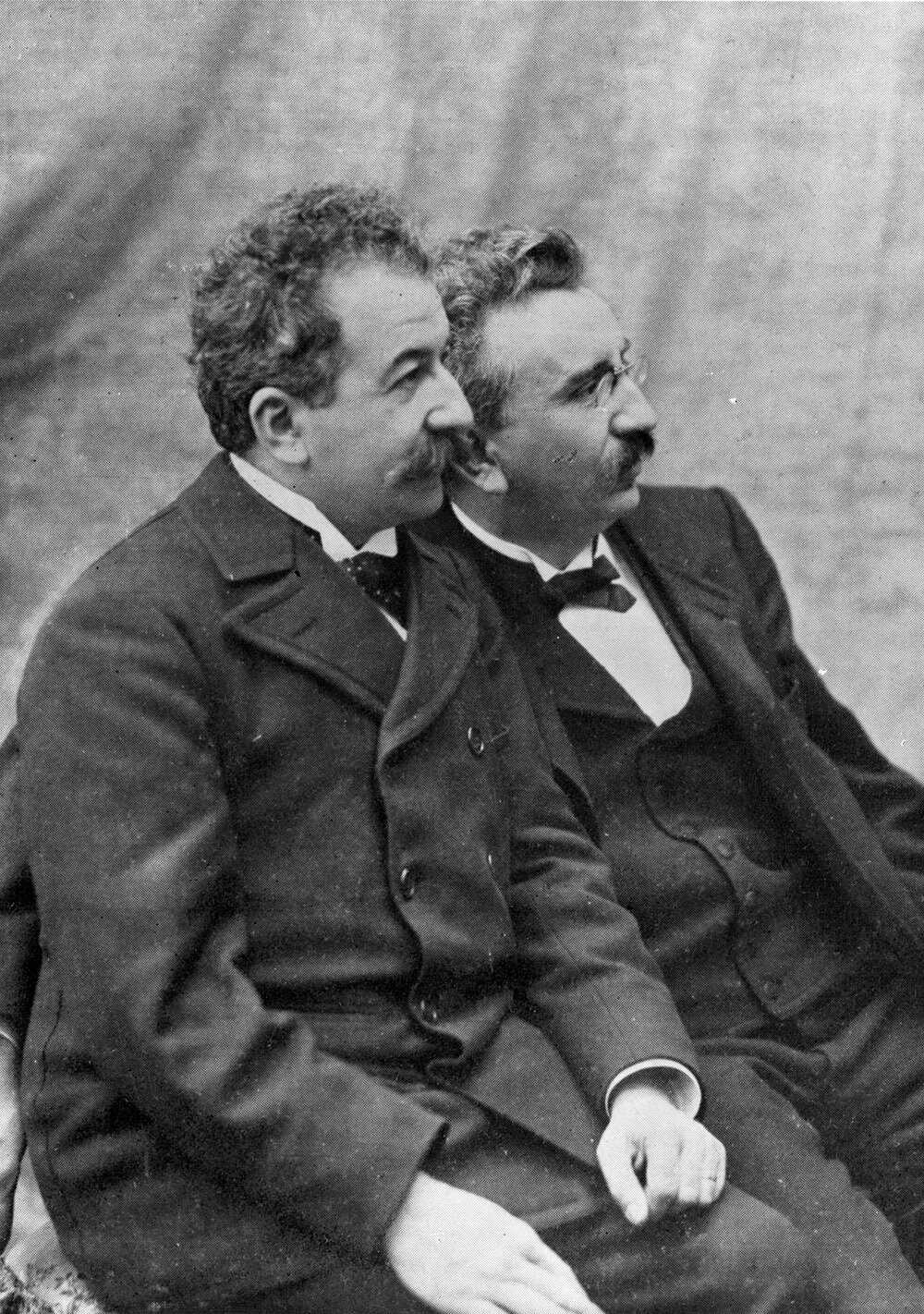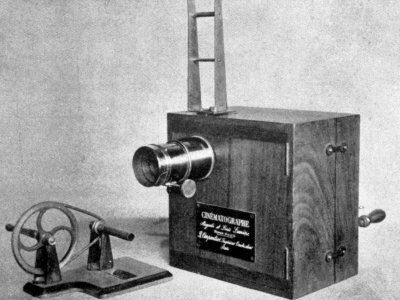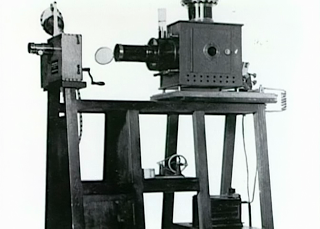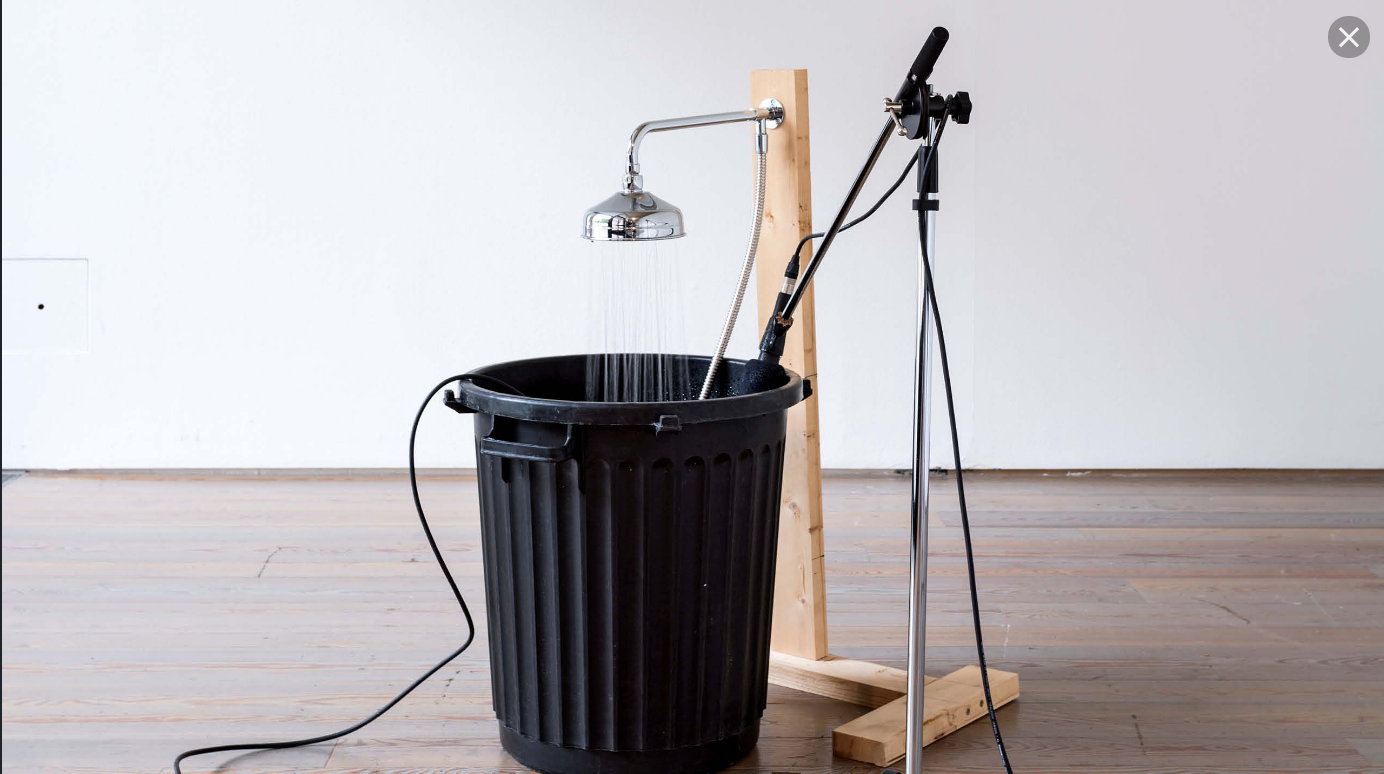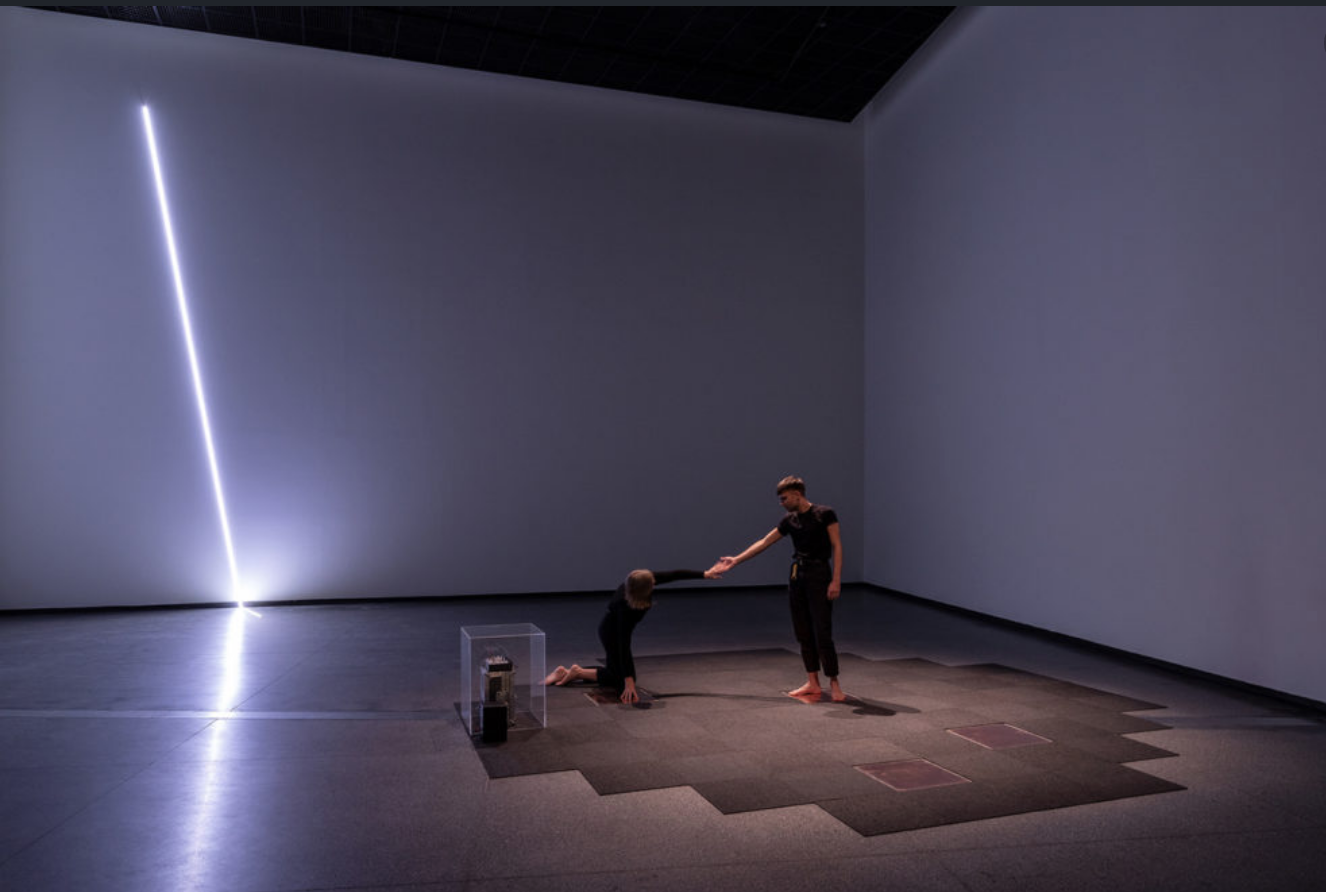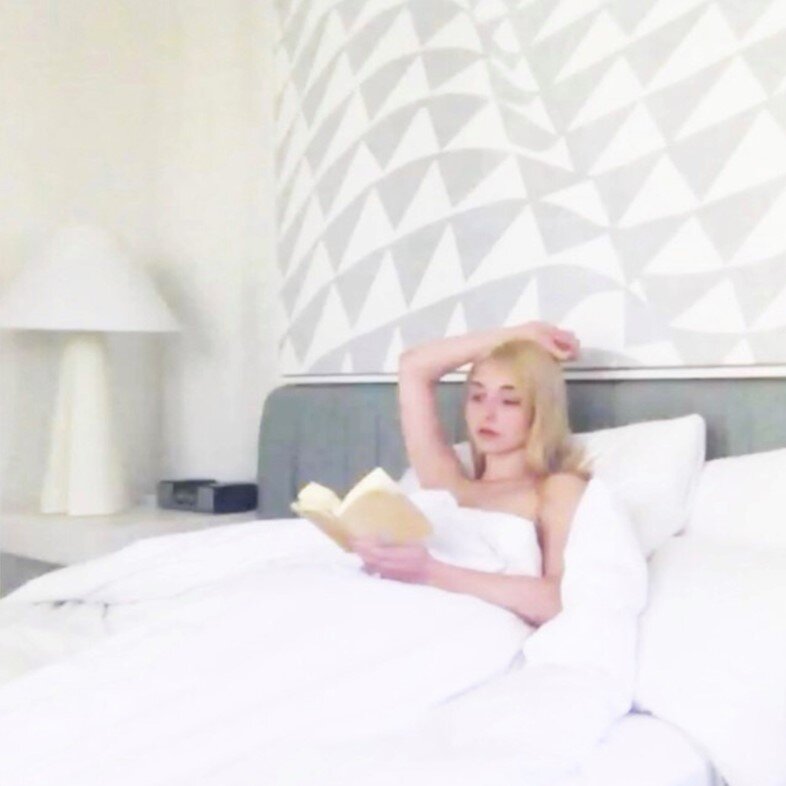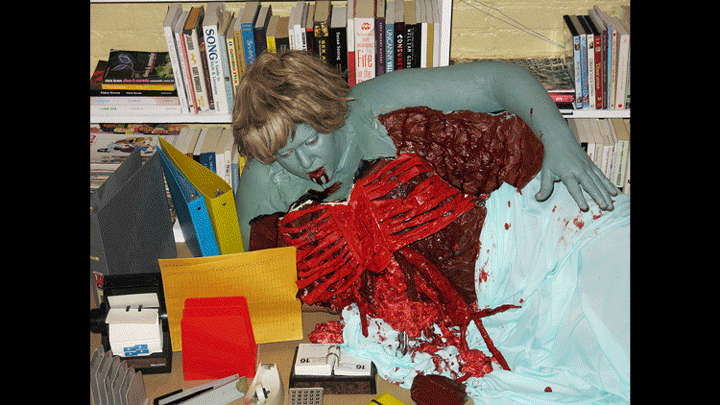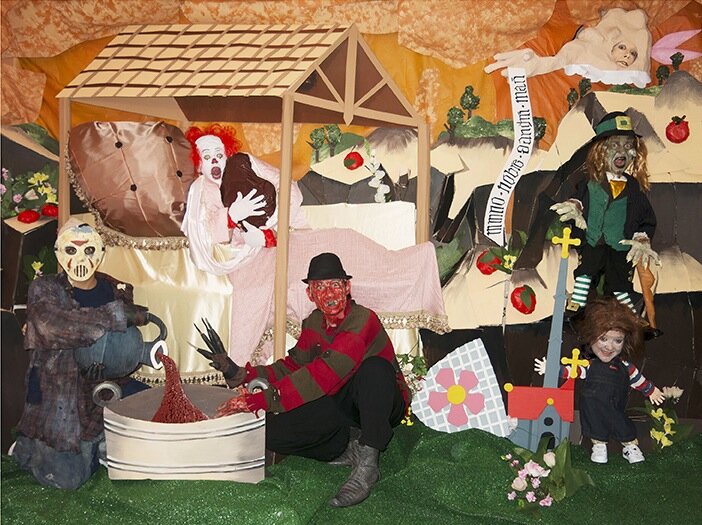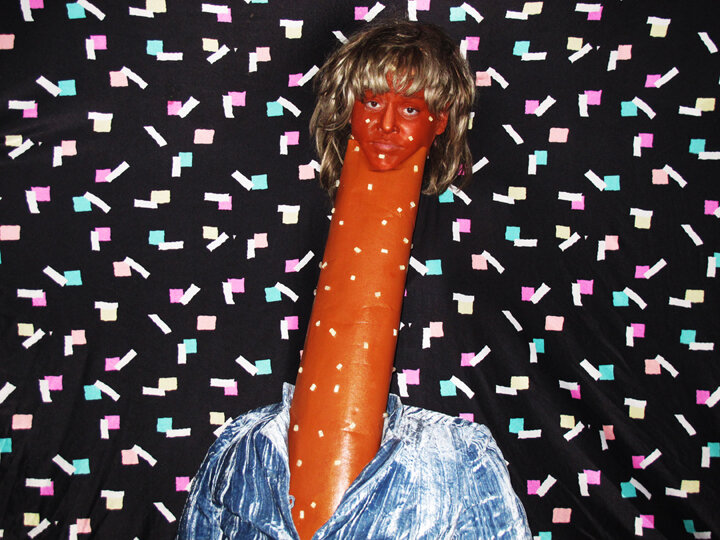This is brilliant. A stream of ten second user videos are tied together by one of each of their three tags and displayed on a website. It is just a great example of all the internet rubbish that is being uploaded with no where to go except to seep in it’s own rubbish. This video content is really hypnotizing. It is like a time capsule. And it continually updates with uploaded content, making the viewer a participant.
REFLECTION
I am further exploring the idea of the ‘male gaze’ and how this has evolved in correlation to technology over time. The critical frameworks I am researching are mostly selfie based works from current post-feminist and digital art.
The evolution of the screen and our interaction with it (from flat to virtual/immersive, outside to within). A viewers role now in digital space is now one of passive viewing and one of self-representation? Or active viewing and self-curation? The screen has become more so the “two-way mirror” - the same screen that we look at, looks at us. What gave us the freedom to represent ourselves has also given us anxiety to be perfect and the oppression of anonymous judgement. I would like to further develop and explore the theories of traditional cinema, self-representation in the digital age.
The evolution of the ‘screened female’ (ie a female that is on a screen to be looked at) and ways to shift power dynamics of the gaze. I am curious in the evolution of the interplay of the gaze. Especially how the power dynamics shift when the subject/nude becomes the artist.
There is a confusing loop of female representation right now - of representation and (being/sense of self) ….. that the female sits in right now. To portray sexuality is applauded or condemned, selfies are vain but they represent the ownership of our own self-image. Women now have the ability to be completely in charge of our own image, but the pressures of media, culture, reality means that this space is continuously oscillating between exploitation, narcissism and empowerment.
The evolution of self-representation in photography is fascinating to explore through history. How many of these artists used character or extremism for it to be considered ’high art’? Cindy Sherman, Claude Cahuns, Jaime Warren. The history of female photography self-portraiture seems riddled with character building and constructed identities and the constructed feminine. Also, the tie between photographic self-portraiture and mirrors is inherent. Is it an intrinsically female link to be photographed with/through a mirror, as they are looking at themselves anyway? AS the new ‘mirror’ - the flipped screen of the de vice - The ten year anniversary of the ‘flipped’ camera is coming up, what a great time to look at how this has shaped our current/modern predicament of the feminine construct.
The correlation between of the objectification of the female and how this relates to our interaction with technology… and where is this heading? The ideas of self-representation in digital culture ties together my interest in the viewers role becoming an active agent in the viewing of film, and the changing dynamics of the female object/subject relation in film/digi-culture. The effect of a multi-partied female representation, will hopefully portray my intention of a monster-like, dissected body reflecting power dynamics in screen culture. My aim is to further study more modern feminist theory and objectification theory - especially relating to film, digital and “selfie” culture. Amy Shields Dobsons exploration of the hypocrisy of the gendered selfie and the problematic nature of this culture. Barbara Fredrickson & Tomi-Ann Roberts ideas generated from Objectification theory, the experiential consequences of being a female in a culture that sexually objectifies the female body. I love the idea of monstrasizing, elongating and dissecting the female body in order to shift power dynamics of the traditional nude/female body in works such as Annagret Soltau, Juno Calypso and Jean-Paul Gaude.
The ideas from ’Virtual Normality: The female gaze in the age of the internet’ are incredible as a starting point, theorizing the post-feminine power dynamics of looking in post-internet, while also examining the works of great female writers/artists Juno Calypso, Leah Schrager. Devising the the Idea of the “Looped gaze” - the feeling of attraction and alienation when seeing yourself through your image in the social media age; the politics of the selfie - Identity, sexuality ands femininity via the body - bodies over which the author has total control - the body as material; and the power of the self-directed camera “the female gaze has an urgent task to assert the nuances of the female experience through visibility, according to the aphorism of the social media age: i am seen, therefore I am.”
Andy Kassler
It is really interesting to compare Kessler to Shrager - they interview each other in Virtual normality. The fun differen e between two Instagram artists is that Kessler put images of himself as a motivation and showing his best life - this is totally the embodiment of self-curated image. and his image is that of success, money, fame, living the high life. It continues to be, he doesn’t explore any other aspect of this. It’s this continual thing that has no sexuality exuded - even though he is naked in one of the pictures. I guess these images are the constructed masculine. there is this culture of success, startups, meditation and new age living that he embodies and pokes fun of. Deals with the construction of identity and the insta-famous. The difference between online and real persona. The virtual unreality of online life. The way people get trapped in their online version of self. Using this for monetary or other gain. He’s a motivational coach for the everyman. The embodiment of successful self made selfie taker. The line on his instagram is ‘how to take a selfie’ and he can teach you all of his secrets. If you take a great selfie, you too can be instafamous.
He doesn’t need to get naked or sexy to gain followers. What is the difference between this and Shrager’s account?
Shragers own Instagram - face girl - i don’t even see any difference to peoples regular feed. it doesn’t even really seem to be in gest. There is even comments within her feed on the politics of fb/insta and just nothing special insta moments, unlike Kasslers work which all seems to be entirely staged, curated and hashtag quoted - very contrived, whereas Shragers own insta account seems reasonably less contrived or contrived in the normal amount. Shrager - 49 K followers, Ona artist 3 m followers I don’t know that the Instagram account by itself is saying anything… or is it? So it is a site based on Ona as a pseudonym that Shrager posts sexy photos of herself as ‘Ona’ and links to her snapchat/website etc where you can sign up and purchase her images through joining her club. I don’t really see what the difference is between this and a insta model doing the same thing. Except that she is writing essays about her situation so that it becomes art? What is the difference between her and another insta model with exactly the same process and photos. I guess its like Nauman saying that ‘anything I do in this studio is now art’. Once you say something is art it is now art. I think her viewpoint and situation that she speaks from is really interesting.
Lumiere Brothers
Lumier brother invented a camera that was also a projector. i phone makes the possibility of camera that is also a screen accessible to most. these two things really tie together for me. the idea of the invention of the selfie coming when the camera flips to be able to see yourself while doing it, also coaligns with the invention of film - where the same camera that had taken the footage was also used as the projector for the moving image.
Lumier brothers
The fun fact about the Lumieres is that this invention is fucking cool.
the simplicity of this device uses the functionality of a basic camera - and camera obscura - wherever there is a small hole, pinprick etc with light on one side and darkness on the other, the lit side of the pinprick will be projected onto the darkness. the possibility of taking a record of that was already invented with the still camera, the Lumiere brothers worked in creating a camera that could take many images in quick succession, creating the illusion of movement. What is the kicker though, is that they invented the machine that could then play this recorded information back through the samehole through which it had captured the image in the first place. I just think that is just a really interesting moment of time where the inverse or reverse of the screen/camera becomes really important and people are finally able to watch ‘cinema’ not in individual, single viewings as had happened previously to this, but in groups of people, projected against a screen/wall so that people could watch these moving images illusion together.
what does this mean for the iPhone?
the camera flips into a mirror. there is no longer a time delay in seeing the image and posing for it. you can pose for the image as you are looking at the image - it develops into an intense self-scrutiny that you can see yourself as you are posing so you no longer pose freely. also the mirror loses its importance perhaps? now that we can see ourselves while taking the photo there is less of a need to look at ourselves in the mirror? or practice poses.
the pose and the selfie are really interesting topic - the pose changes dramatically when the camera becomes flipped. it is no longer looking at the camera lens, it is now looking at the screen. the body isnt freely moving, the body is tied to the device that takes its photo. in the selfie as art idea - the artist is now the model, the artist is tied to the device and the device bridges this gap between the artist and the model - the hand holding the device and the device itself are the bridges between artist and art, or artist and model.
in terms of artist - the artist now controls completely their image - there is no lag between, and no need for anthers eyes to see you in that moment and decide what looks good - you can see what looks good ongoingly. i was reading a book called 5 senses, and it made a really interesting point about the hands that is cutting its nails. at one point the hand is active and moving doing something to the other hand which lays impassively, receiving this nail did. but then the clippers are passed to the impassive hand - the victim hand and the process reverses. I feel there is some type of chain of thought within these ideas. the artist/hands makes the photo happen by pressing the camera button, but at the same time the artist is posing, ready for the shot to take a photo of them. its a passive and impassive moment that combines the artist with model making both impassive and both passive at the same time. or is it? at the time that the button clicks - you are simultaneously pressing and preening - your pose is already fixed and your hand desperately seeks for the button space, perhaps staying fixed in position and moving your eyes across slightly so that you can see the right button. its maybe a moment where both of these roles connect and hit each other with the sound of a camera click.
so in terms of female representation?
so the selfie means that as women we don’t have to rely on someone else being the bearer of the look, we are the bearer of the look. it doesn’t need another set of eye, another person to share this experience
The Berger stuff is really interesting to me - i think that the iPhone has become the new mirror - and all the old shit about vanity/narcism etc that underly all of the told nudes and female figure have now transferred to the selfie. the same argument is made, be it now on youtube comments and facebook walls. the same old shit.
WOAH - tangent?
It is really interesting thing to think of the importance of these two technological shifts in ways of viewing and ways of being an audience… maybe?
firstly, the shift of watching moving images individually, as a single experience (camera obscura, zoetrope etc) as a lone experience - this shift suddenly came about that people were able to watch the same image in a group of people. the moving image is no longer a lone experience, it is now a group experience.
now the shift of the selfie phone - the group or dual experience of taking a photo - the need for more than one person within this photo taking experience has changed to only needing one person - shift back into the lone experience of experience an image. although obviously people can still take group photos, but the need for one other person has gone.
what does this say about society ? well fuck, it was the beginning of growing collective conciousness, this group dynamic of the cinema is really important to our experience of cinema…. something… i think it changes from experiencing something ‘magical’ alone, with no one to gauge your experience against, to a shared lived experience…
selfie - but then it changes from having to rely, or ask someone to take a photo of you - the human interaction is disappearing and in its place is the online/digital interaction.
maybe the cinema brought people together in a shared, lived experience - and the selfie camera is taking the individual into a lonely place. so while it may be liberating, it also points the world in the direction of simulation and loneliness and individualism.
Haroon Mirza
construction of an act
I like how this “act was constructed”. The cacophony of sounds and the distance/time relations, space-time and sound. ie the amplified sound was in a different room to the thing that was being amplified that made this anticipation and waiting for the sounds, where the sound was going to hit you later in the rooms. you could see the microphone so knew that it would probably b somewhere.. or was it because the gallery dude said so, I'm not sure. But I felt a sense of exploration and anticipation in this. Especially also with the three videos/works on a loop of 20 minutes each, so you had to wait 20 minutes at least to see all of the works. It made the place like a working sound clock loop. The sound loop- trapping us inside a sound loop. You got a feeling of temporality. Especially with something like step siren - which mimics the movement of a clock and the cymbal nearing the radio making the same noise on repeat ad infinitum.
The cacophony of noise was interesting. It seems to play with the space entirely,with time and with the placement of the viewer (space?). Using the nostalgia of technology - radio waves and LED light waves to create this idea about temporality and two domestic technologies that never had to coexist at any other time. The new and the old, and the turning of the clock like a cymbal.
The idea of amplification itself is interesting. here the event is microphoned, the sound is amplified and comes from somewhere else. What does this do? Creates a spacial confusion aurally, bringing to attention the act of amplification.
plays with you cognitive function of listening and being in a 3-dimensional space and the ways that you navigate this space. it reminds me of that exhibition at Ian Potter about sound. drawing attention to the way that you cognitively navigate sound in space - especially in cacophonous situations. the changing in the temporality of this makes the sound layers continuously change over the hour or so. Each room is a different joining together of different sounds and the bleed of different sounds making everywhere you stand in the exhibition a different place.
I am really interested in lagging temporality and sound, and sound bleeding to create a new experience. I don't know if any of this will become prevalent in my work but it is an interest that I'm sure I will continue to be fascinated with in the future. I think its something important to think of when making video work, I would like to make an exhibition in which the sounds from the video complement each other or work on harmony/dissonance that brings another layer to the overall work. I think that the Sound Exhibition at Ian Potter exhibition was really successful in this as it brought the attention to the cognitive function of hearing as the voices themselves were talking about the act of listening and hearing. I don't know if I could be that deliberate.
I think that my video works at the beginning of the semester were trying to accomplish this but with an image instead of sound. It is a great idea to be able to stand in a space and your changing position changes your experience so that the viewer is forced to move about to create their own audial experience. I think that was what I was trying to do with my first semester's work visually, but now I realised that I missed the entire sound element, one that would make much more sense.
Amelia Ulman
Amelia Ulman was using the form of the instagram feed to tell a narrative and to create a character based on the constructed digital self. Her work is similar to Kassler except the scrutiny that she upheld and the backlash against her ‘runing her career’ etc etc was ridiculous and female centric. but also on the other side, Kassler never did anything within his instagram character that would cause any backlash. - except perhaps his nakedness. So compare Kassler getting naked and the comment ‘I like it’ and some random like emojis to what something like Shrager gets - more forceful comments about what they would like to do to her - take action, whereas the Kassler comments are appreciative and passive. The women get ‘I want to do xxx to her/to her (insert body part here)’. The act of voyuerism is an active one in the case of watching women? Or is it just generally in the case of being a man. I think this continues into the porn stuff. Why the empathetic nature of our brain so we can feel ourselves in the porn so it turns us on? I don’t think this changes for men or women. The gifs that I have been finding have headless males - so as to presumably allow the viewer to imagine himself as the owner of the penis. The eyes of the porn star are usually staring into the space where the headless mans eyes would be, or staring into the camera - into the viewers eyes.
So within the film the viewer is the protagonist? And the woman is the object or antagonist? What is the relation between the viewer and female in these instances?
Jaime Warren
SELF PORTRAIT AS…
https://www.dontyoufeelbetter.com/art-history-series-1
the comedy in this is great.
and she is really saying something about self-portraits - not sure what? in the digital age - its really topical - ie self portraits as celebrities totally looks like. Really amazing about this specific time in meme culture.. meme culture is such a weird thing anyway. Memes of memes and surreal memes now - this take sit to the next level. Self portrait as.. whatever - insert pop culture reference here.
The horror gifs and the self portraits as horror monsters inserted into reanimations of famous paintings through art history.
i like the costumery and the shitiness and DIY of the effects. making it like a great costume party. the horror element is really good. Bringing in such meme reference pop culture, but with the feminine self-portrait.
Staged self-portraits versus staged selfies - this idea that there is any difference between the act of the two.. they are both equally staged and probably the same effort goes into them - one of making sure props and light scenery is right, the other it taking enough photos to make it look like the perfect combination of not caring, being light free and easy and looking good, looking natural.
Douglas Gordon
24 hour psycho - Douglas Gordon, 2 frames/second, no sound
Expanded Cinema - breaking the literary and static narrative of the unique image of cinema, questions exhibition spaces etc.
NB: equals to the lag that we get with digi device and the internet. This is commonplace now in personal viewing.
highlights the moving image - the images between motion and the motion images themselves that.. what are these in-between frames? it is played frame by frame but you can clearly see in most cases of major motion a transparent double of two different frames. is this effect in the process of capturing the image or of projecting the image. that is a little confusing as the motion picture camera should in theory capture individual images and the playing of them in fast motion will trick it into movement. the scenes of fast motion are so interesting. the complete blur of the final knife plunge is really hypnotic. the fast motion of the water falling means that the water is mostly in focus and vivid drops, and yet the body/movement is blurred. like a rotating wheel and the trick of movement, the water looks like it is going backwards
slowing down the scenes that in reality speed function in a way that is nearly subconscious 0- too fast to clearly read them, but enough to gather the illustrated picture of violence and speed and death, here the speed is slowed to the point where the comprehensible shots seem looong as fuck, almost to absurdity.
this scene of psycho is interesting to use in itself - the villains female that deserves to die, the castrated male. From memory i think that Hitcock was really interested in Freud? All of this ties back to the monstrous feminine…
Just a great example of what playing with time in film can produce. It’s just something that really fascinates me - this illusion and our state of believing? gullibility? An interesting reflection on what our eyes and brain do to the outside world. Just makes me think that our perception and experience of an event or thing is totally different from what that thing actually is. While film and cinema has become something that is a shared experience, every individuals perception will be different? Or is it that we have investigated the eye and the vision that the eye produces so much that we can pinpoint the experience of the viewer - in regular film, say a long-shot. But once you start to play with these factors that mimic the eyes real-life input, you start to play with peoples perception (i.e. the edition of editing). once this perception is ingrained to be used to something (i.e. editing of a conversation in traditional cinema, using the 360 degree rule; basic editing of time lapse = distance etc) Playing with that brings our base experience further up to a new level (we automatically read film in a way that can make time lapses etc), where the next cinematic technique/technology is played with and it keeps going up. The idea of levelling up the human perception to have an ingrained knowledge of cinema and technology as a natural and unconscious reading is really interesting to me - it is like a language and that we can all speak it fluently without thinking. What happens is that more “words” are added, different languages? (ie technologies are added). With art you can totally hang this upside down and play with this cinematic language so that it confuses a persons perception of film, and therefore really the real world right? Because these cognitive actions are so inherent and unconscious that we start to wonder about everything? Nothing is really real and everything is a construct.

